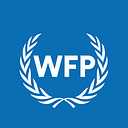The Great Enablers
Chapter 4: The power of choice
By Enrica Porcari, WFP Chief Information Officer and Director of Technology, and Dominik Heinrich, Director of Innovation and Knowledge Management
WFP is the largest humanitarian organization in the world fighting hunger. Many of the people we serve depend on our assistance in order to survive — but saving lives is only the first step; we also need to feed hopes and dreams, changing lives in the process.
Innovation and technology are two of the keys to unlocking an essential aspect in the development and growth of the people we serve: the power of choice.
Choice is what makes us humans feel a sense of freedom and ownership over our own destinies. When a person has different options, a whole world opens up to them. That person feels empowered and validated and now has a voice which, in the moment of choosing, is heard.
Take Bangladesh, where WFP gives choice to 500,000 people in Cox’s Bazar using blockchain. Receiving assistance from multiple humanitarian agencies through a single card, they can choose how to spend their entitlements, selecting from a wide variety of products at the world’s largest refugee camp.
Another example is the access people in Ecuador, Colombia, Peru, Honduras and the Dominican Republic now have to life-saving information in times of COVID-19. Chatbots give them the choice to contact WFP from any place at any time, and receive an answer to their questions in their own language through a technology called Natural Language Processing (NLP).
But choice comes in many shapes and sizes, and when it comes to delivering assistance, WFP knows that one size doesn’t fit all. Necessities change between the people we serve according to many factors like their nationality, context, condition, age, etc. For instance, the same school feeding programmes that help 388 million children around the globe would now have the potential to be enabled through PLUS School Menus, a menu optimization software that calculates and selects the most cost-effective and diverse meals for children, while respecting local eating habits.
WFP brings choice not only to those it serves, but also to itself and to fellow humanitarian and development organizations by innovating technical solutions that allow it to bring more meaningful assistance, leaving no one behind. Because to achieve Zero Hunger by 2030, we need to work with everything we have, not only to save lives, but to offer the choice of a better future.
More information on the themes explored in this series is available in a new WFP platform, which not only offers a glimpse of some of the innovation and technology behind the scenes of a 2020 Nobel Peace Prize Laureate, but also suggests practical ways that companies, entrepreneurs and individuals can work with us to achieve even more. Visit wfp.org/enablers.
